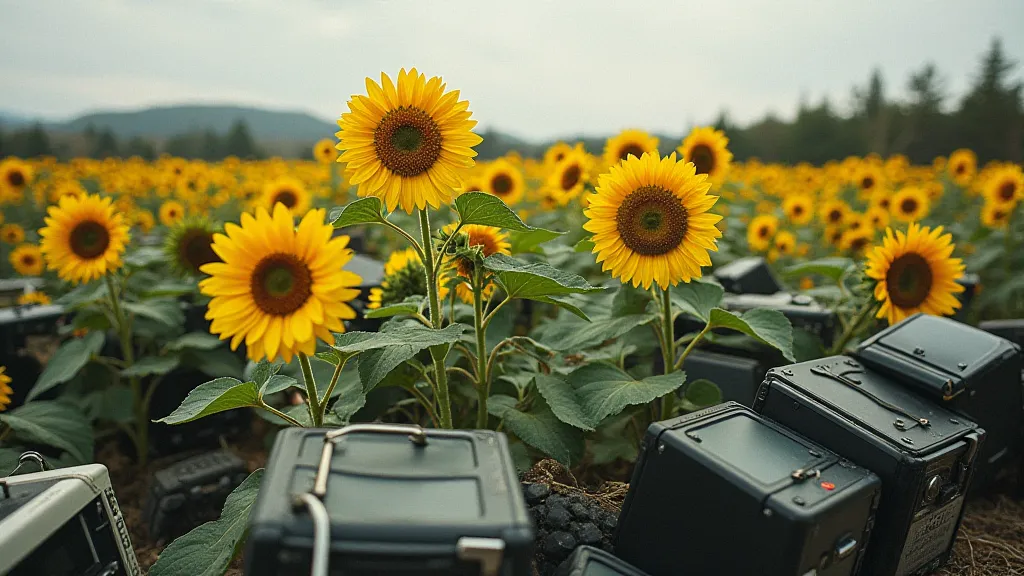Understanding the Circular Economy: A Sustainable Model for the Future
Our planet faces unprecedented environmental challenges. The traditional "take-make-dispose" model, often referred to as the linear economy, is simply unsustainable. It depletes resources, generates vast amounts of waste, and contributes significantly to pollution. Thankfully, a promising alternative is gaining momentum: the circular economy. But what exactly is it, and how can it help us create a more sustainable future?
From Linear to Circular: The Core Difference
The linear economy follows a straightforward path: raw materials are extracted, products are manufactured, used, and then discarded. This model prioritizes short-term profit, often at the expense of long-term environmental well-being. It's a one-way street leading to resource depletion and overflowing landfills.
The circular economy, in contrast, aims to minimize waste and maximize resource utilization. It's inspired by natural ecosystems where waste from one process becomes food for another. Instead of “end-of-life,” circular economy principles focus on keeping materials in use for as long as possible. This shift goes beyond simply recycling; it’s about fundamentally rethinking how we design, use, and reuse products, often requiring a move away from constant consumption and toward more mindful practices. For many, this involves considering alternatives to common household items, such as single-use plastic wrap, and exploring options like DIY beeswax wraps as a practical step towards reducing waste.

The Principles of a Circular Economy
Several key principles underpin the circular economy:
- Design for Durability and Repairability: Products are designed to last longer and be easily repaired, extending their lifespan and reducing the need for replacements. This includes using high-quality materials and making components readily accessible for repair.
- Material Selection: Prioritizing renewable, recycled, and recyclable materials minimizes environmental impact and reduces reliance on virgin resources. This encompasses not only the primary materials but also the inks, glues, and other components used in manufacturing.
- Reuse and Refurbishment: Encouraging the reuse of products and components through repair, refurbishment, and remanufacturing. This can involve simple cleaning and cosmetic repairs, or more extensive overhauls to restore functionality.
- Recycling: Recovering valuable materials from discarded products to be used as feedstock for new products. While recycling is a crucial part, it’s considered a lower priority than reuse and repair. The energy required for recycling can be significant, and some materials degrade during the process, making reuse a more desirable outcome.
- Reduce Consumption: Promoting conscious consumption and minimizing overall demand for goods and services. This often involves questioning whether a purchase is truly necessary and exploring alternative solutions, such as borrowing or renting.
- Sharing Economy: Facilitating access to goods and services through sharing platforms, reducing the need for individual ownership. This approach can significantly reduce the overall demand for resources and minimize waste.
- Sustainable Agriculture and Food Systems: Recognizing the critical role of agriculture in resource consumption and environmental impact, promoting practices that regenerate soil health, reduce water usage, and minimize chemical inputs. Supporting local farmers and choosing seasonal produce is a direct way to contribute to a more sustainable food system – you can find out more about supporting local farmers and the benefits of doing so.
Benefits of Embracing the Circular Economy
The shift to a circular economy offers a wealth of benefits:
- Environmental Protection: Reduces waste, pollution, and resource depletion, contributing to a healthier planet. This includes reducing greenhouse gas emissions, protecting biodiversity, and conserving natural resources.
- Economic Opportunities: Creates new business models, jobs, and innovation in areas like repair, recycling, and sustainable design. The transition to a circular economy is expected to generate significant economic growth and create new employment opportunities.
- Resource Security: Lessens dependence on finite resources and volatile global markets. By relying on recycled materials and renewable resources, we can reduce our vulnerability to supply chain disruptions and price fluctuations.
- Resilience: Strengthens supply chains by reducing reliance on single sources of materials. Diversifying our sources of materials and promoting local production can make our economies more resilient to external shocks.
- Social Benefits: Can lead to more equitable access to goods and services through sharing models. The circular economy has the potential to address social inequalities by making goods and services more accessible to those who need them.
- Improved Public Health: Reduces exposure to harmful chemicals and pollutants associated with resource extraction and waste disposal. A healthier environment contributes to improved public health outcomes.

Circular Economy in Practice: Examples to Inspire
The circular economy isn’s just a theoretical concept. Numerous businesses and communities are already implementing circular principles:
- Clothing Rental Services: Reduce textile waste and provide access to a wider range of clothing options. This is a great alternative to fast fashion and a way to keep clothing in use for longer.
- Product-as-a-Service (PaaS): Businesses lease products instead of selling them, incentivizing them to design for durability and repairability. This shifts the focus from short-term sales to long-term customer relationships and product stewardship.
- Industrial Symbiosis: Companies exchange waste materials and energy, creating a closed-loop system. This mimics the natural world, where one industry’s waste becomes another’s resource.
- Biomimicry: Designing products and systems based on nature’s efficient and regenerative processes. This approach seeks to learn from the way nature solves problems, creating solutions that are both effective and sustainable.
- Regenerative Agriculture: Farming practices that focus on restoring soil health, increasing biodiversity, and sequestering carbon. This moves beyond simply minimizing harm to actively improving the environment.
The Future is Circular: What You Can Do
Transitioning to a circular economy requires a collective effort. Here are some ways you can contribute:
- Support businesses committed to circular practices. Look for products made from recycled materials, designed for durability, and offered with repair services. Consider certifications and labels that indicate a product’s circularity.
- Embrace mindful consumption. Ask yourself if you really need something before buying it. Explore alternatives like borrowing, renting, or buying used.
- Repair and reuse items whenever possible. Learn basic repair skills or support local repair shops. This extends the lifespan of products and reduces waste.
- Participate in recycling programs. Ensure that recyclable materials are properly sorted and disposed of. Understand the specific recycling guidelines in your community.
- Advocate for policies that promote circularity. Support initiatives that encourage sustainable design, waste reduction, and responsible resource management. Contact your elected officials and voice your support for circular economy policies.
- Conserve Water: Reduce water usage at home to lessen the impact on precious water resources. You can find helpful strategies for water conservation at home and contribute to a more sustainable lifestyle.
- Educate Yourself and Others: Stay informed about circular economy principles and share your knowledge with friends, family, and colleagues. Raising awareness is crucial for driving change.

The circular economy offers a pathway towards a more sustainable and resilient future. By embracing its principles and taking action, we can move beyond the linear “take-make-dispose” model and create a world where resources are valued, waste is minimized, and the planet thrives. It's about creating a system that benefits both people and the planet, ensuring a prosperous and healthy future for generations to come.





